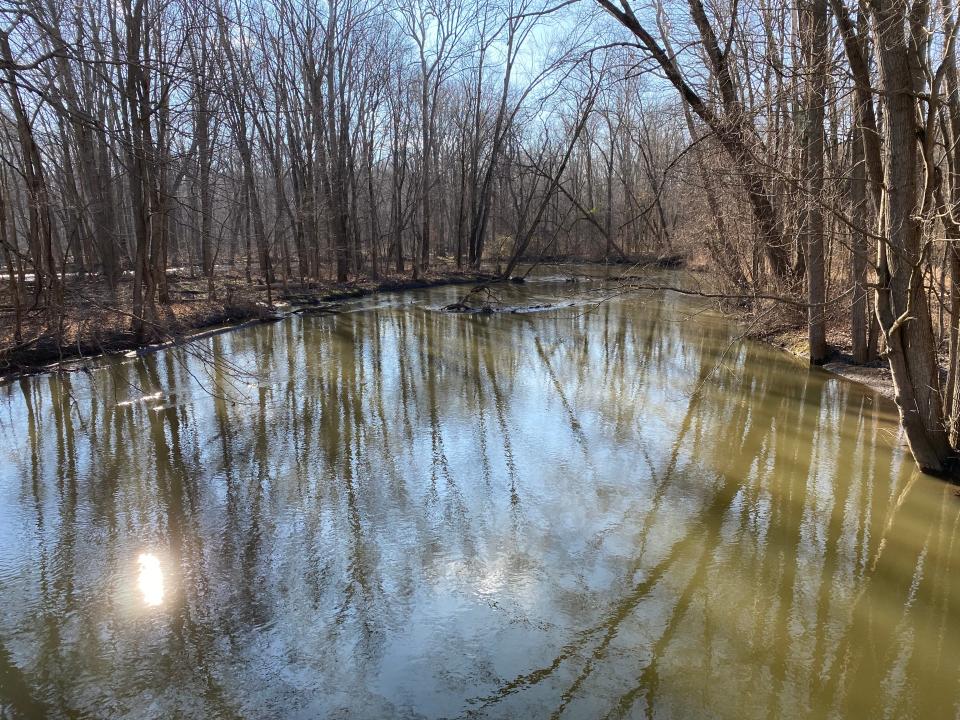Water quality testing, standards need updating

Last month I wrote about the growing problem of harmful algae blooms in the Great Lakes and in this region. In our Western Lake Erie watershed, daily observed satellite bloom images and forecasted predictions show that this year’s bloom, which started earlier and is more intense than predicted, has spread. The densest part, with toxins above safe limits, is between Monroe and Maumee Bay. It extends from Stony Point to Port Clinton and stretches across the lake to Canada.
Many inland lakes and streams here get them every year.
More:Insanity loop on water quality improvement efforts has to stop
Harmful algae (cyanobacteria) blooms are fed by the nutrient phosphorus. It’s most bioavailable in the compound orthophosphate in its dissolved form, which will pass through pharmaceutical-grade (0.45 micron) filtration. Like a spoonful of sugar invisibly dissolved in a glass of water, dissolved orthophosphate goes wherever water goes. While nitrogen determines a bloom’s toxicity, if you keep dissolved orthophosphate out of surface water, you’ll stop or reduce the cyanobacteria bloom.
In Western Lake Erie, these nutrient sources are primarily agricultural fertilizers (commercial and manure) and, to a lesser extent, sewage (livestock, human). Fertilizer that isn’t applied correctly, failed or illicit septic hookups, and municipal stormwater overflows are the main pathways here for these bloom-causing nutrients to enter surface water.

For decades, agricultural efforts to keep nutrients out of surface water have centered around a system of best management practices (BMPs), things farmers can do on their fields. However, a multiyear study published in 2021 (Wang, et al) of the currently popular BMPs — reduced tillage (no-till, strip-till, rotational till), cover crops and edge-of-field filter strips — showed that even if all three of these were applied to 100% of the row-crop land in the Maumee River watershed (including Bean Creek), it still wouldn’t be enough to reach agriculture’s share of the 40% targeted reduction in phosphorus. The River Raisin watershed is similar.
That’s because models created showing that many BMPs effectively control water pollution are flawed. They don’t include important local variables like preferential flow paths and liquid manure or the massive tile drainage network underlying most of the Western Lake Erie watershed. For example, many commercial fertilizer and manure application recommendations assume that the locations of buried, perforated tile lines are known so they can be avoided, that those runs are in uniform, parallel rows. But that’s not how the first tiles were installed back in the mid-1800s when the Cottonwood Swamp was drained and for decades afterward. Those laser-sighted parallel tile runs, all at the same depth, didn’t happen until the 1980s. Those models also don’t consider that many practices designed to trap nutrients turn into sources when they become saturated.
The focus must switch to results instead of practice/process — measurable improvement in water quality. The state of Michigan needs to continue sampling local tributaries to determine the sources and amounts and hotspots in each, and it needs to set limits (total maximum daily loads, or TMDLs) on surface water phosphorus for its portion of the Western Lake Erie watershed. It also must set water quality standards for both cyanobacteria and the toxins they produce in all surface and treated drinking water. Regulations and enforcement need to be strengthened; what we’re experiencing now is the accumulated effect of the lack of both.
Interactive decision tools are available that allow farmers to input information about each field and crop grown in a given year into a comprehensive local database that returns appropriate BMPs for each scenario, unlike the Michigan Agriculture Environmental Assurance Plan with its checklist of recommendations.
Michigan has approximately 330,000 failing septic systems. Efforts to better regulate these and to use some of the American Rescue Plan infrastructure money to help homeowners fix them stalled in the Michigan Legislature.
Communities that draw their drinking water from the Raisin and discharge wastewater into it and Bean Creek must be proactive, expanding testing and upgrading most facilities. Especially now, with so much infrastructure money available.
Algal toxins cause liver, kidney and neurological damage, among other problems. They can be fatal to people and pets, and diagnosis is very difficult. Even in tiny amounts, this is very dangerous stuff, and the way many of our elected leaders at all levels are dealing with this issue is irresponsible.
Water is life. Something to think about when you vote.
Pam Taylor is a retired Lenawee County teacher and an environmental activist. She can be reached at ptaylor001@msn.com.
This article originally appeared on The Daily Telegram: Pam Taylor: Water quality testing, standards need updating

